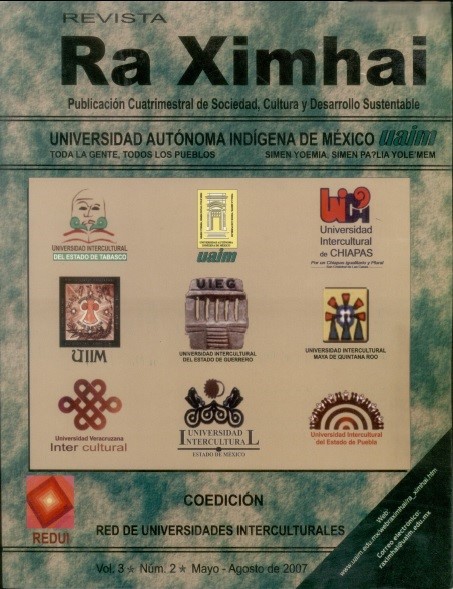Temaskali: The house of heat
DOI:
https://doi.org/10.35197/rx.03.03.2007.05.cmKeywords:
spirituality, Meshika, Lakota, Tonal, Temaskalero, IniunkayakteloAbstract
The practice of temaskali has been historically associated with the pre-Columbian peoples of America, however there are those who claim that its origin is in prehistory and even more so, in Finland and Iceland. For centuries temaskali has been known as a therapeutic practice associated with women and their suffering during childbirth, but this situation is maximized to the spiritual aspect thanks to the worldview of the ancient American peoples. Today and given the precarious conditions of public health, human beings seek alternatives that improve our quality of life and many of us have opted for the traditional medicinal practices of ancestral peoples, temaskali is one of those practices that we nevertheless ignore much about. Unfortunately there are very few historical records about the practice of temaskali, but the interest of the human being for its roots and the perseverance of many indigenous and non-indigenous grandparents have brought to us this historical, cultural and health legacy that increasingly captivates more people because the results generated are unquestionable and verifiable. An intense search for bibliographical material and a 7-year experience within the tradition of Mexicanness, as well as countless talks and meetings with different bearers of ancient knowledge are the main support of this small article, the product of research on the oral culture of some indigenous sages, practitioners of alternative medicine, traditional therapists and the ways of life of some pre-Hispanic dance groups, as well as the conscientious study of researchers dedicated to the dissemination of ancestral medical practices.
Downloads
References
Rojas, A. M. 2006. Tratado de Medicina Tradicional Mexicana. Bases históricas, teoría y práctica clínico-terapéutica. Tomo I Historia de la medicina tradicional. De la prehistoria a la medicina contemporánea. Editorial Tlahui-Educa. Primera edición Cuernavaca, Morelos.
Zakelarez, L. G. E. 1997. Trabajo de Tesis para optar por el título de Médico Naturista por la Escuela Superior de Medicina Natural. México D.F.
Amador, R. C. 2002. Tlajtolchiuali, palabra en movimiento: El verbo. Biblioteca de los Pueblos Indígenas, IMC.
Sandoval, F. E. A. 2003. El Temzcal Otomi. Ritual de Purificación, Sanación y Refrescamiento. Coedición de la UAIM y la UAEM.
Tradición oral: Fuego Sagrado de Temiktla 4 Vientos.
Jefe Alfonso Pérez Tenoch, San Ambrosio Chalmita, Ocuilan, Méx.
XAHNI, Asociación Local de Productores Rurales.
Presidente Vitaliana Partida Pulido, San Lorenzo Tepaltitlán, Toluca, México.
Kalpuli Ameyaltonal de Amecameca, Méx. Jefe David “Mazatl” Velásquez Romo, Amecameca, México.
Calpulli de Danza Cósmica Yaotecatl Huitzilopochtli, Jefe Santos Molina Garduño, Santa Cruz, Atizapán, México.
Downloads
Published
How to Cite
Issue
Section
License
Copyright (c) 2007 Carlos Edwin Morón García , Verónica Trujillo Mendoza

This work is licensed under a Creative Commons Attribution-NonCommercial 4.0 International License.
Usted es libre de:
- Compartir — copiar y redistribuir el material en cualquier medio o formato
- Adaptar — remezclar, transformar y construir a partir del material
- La licenciante no puede revocar estas libertades en tanto usted siga los términos de la licencia
Bajo los siguientes términos:
- Atribución — Usted debe dar crédito de manera adecuada , brindar un enlace a la licencia, e indicar si se han realizado cambios . Puede hacerlo en cualquier forma razonable, pero no de forma tal que sugiera que usted o su uso tienen el apoyo de la licenciante.
- NoComercial — Usted no puede hacer uso del material con propósitos comerciales .
- No hay restricciones adicionales — No puede aplicar términos legales ni medidas tecnológicas que restrinjan legalmente a otras a hacer cualquier uso permitido por la licencia.








